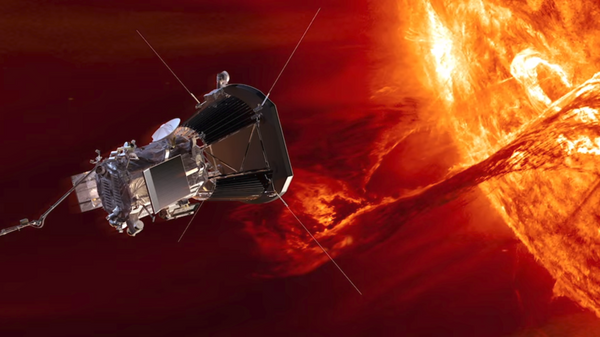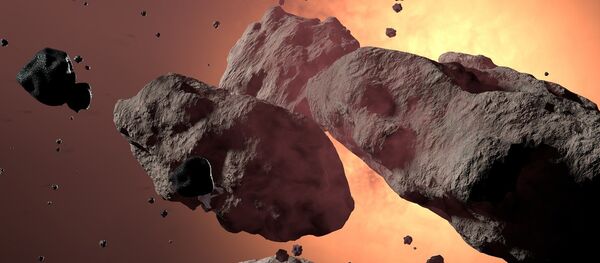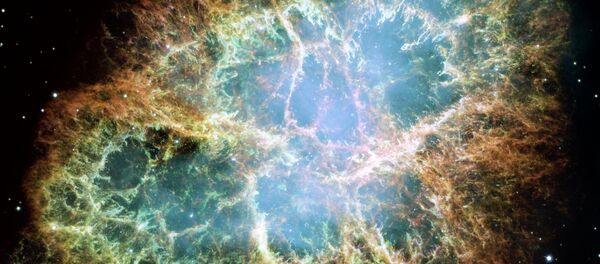Sputnik has discussed this with Dr. Alice Gorman, an internationally recognized leader in the field of space archaeology and Senior Lecturer at Flinders University.
Dr. Alice Gorman: One of the things that is most exciting about this mission is that it’s going to produce some images of the Sun. The probe has four instrument packages so I don’t think it’s actually taking photographs but it’s going to use the measurements it takes to create an image of the Sun's atmosphere which is far closer than anything we’ve ever seen before and will be far more detailed, and I think that’s really quite exciting.
One of the big mysteries with the Sun is why that corona area of the atmosphere is so much hotter than the inside. So that’s a result people are going to be really interested in and, of course, as you said, the Sun has such a huge impact on our lives. It’s a very active place. It’s not just like when we're walking outside and we feel the beautiful heat of the Sun on our skin.
So the coronal mass ejections where these massive clouds of boiling gas are ejected out can do things to the Earth like take out electricity grids which can have a bit of a social and economic impact. So we’re gonna learn a lot more about thing like this. We're going to learn a lot more about solar physics, but I’m really keen to see those images that the instruments are going to produce.
Sputnik: Can you tell us about how close this probe is going to get because everybody’s thinking this is the Sun, it’s extremely hot?
So the probe has a heat shield which is made out of nearly 10-cm think composite carbon fiber. This is very heat resistant, and the instruments are shielded behind this sort of semi-parametal structure and one of the key issues is going to be keeping that structure facing the Sun all the time so those delicate instruments don’t get blasted, but it seems they have pretty much mastered how that’s going to work. So look, we're expecting at least seven years worth of data from this, and it’s not going to be that close to the Sun all the time.
So it’s going to swing out past Venus, have a little bit of a chance to cool down, gather its forces, and use the gravity of Venus to swing back so it will get closer and closer to the Sun on every one of those swings. And we’re going to learn things about Venus and that part of space as well as all of this amazing solar information.
Sputnik: Why now? It has been Mars and the Moon, and just now we’re getting around to really getting this close to the Sun?
Dr. Alice Gorman: Well, you know we can gather a lot of data about the Sun from the surface of the Earth and spacecraft in Earth orbit and all of that and there have been missions in solar orbit designed to study the Sun before. So in the 1970s two Helios satellites were sent out. They stopped working in the 80s.
At the moment we've got Stereo A and B, they're not very close to the Sun, they’re making stereo images of the Sun. There’s a couple of other ones out there, but this is what makes it so extraordinary the fact that it's going so close. But it's been planned for a long time.
So the budgetary commitment for this mission was actually made in 2006, so people have been thinking about it for a long time. And, of course, in design terms we are all the time getting more sophisticated and better technology, so that design would've evolved as all of these different technologies became available. And a mission like this doesn’t happen overnight.
Sputnik: Could you tell us about how important this event is going to be to your particular field of study? Perhaps a couple of words about what space archeology is, what you study?
Dr. Alice Gorman: So what I’m interested in is what particular spacecraft can tell us about the human engagement with space in the 20th and 21st centuries. So I'm interested in what they look like and what they do. How they fit into our culture both of science and technology and also sort of social culture. For me Parker Solar Probe is interesting because it's unique.
It’s the only one of its kind right now. It’s been designed especially for this environment, but it has probably drawn on technologies developed for other hot environments.
Views and opinions expressed in this article are those of Dr. Alice Gorman and do not necessarily reflect those of Sputnik.








